#karner blue butterfly
Text


Karner blue butterfly
69 notes
·
View notes
Video
Karner blue butterfly by Justin Meissen
#Crex Meadows#Karner blue butterfly#Lycaeides melissa samuelis#USA#Wisconsin#butterfly#conservation#endangered species#entomology#midwest#nature#pollinator#prairie#science#flickr
31 notes
·
View notes
Note
favorite butterfly and why?
You're asking me to pick between my babies!? I have so many favorites, for so many different reasons. You can't expect me to pick just one! However, for fear of making this response twelve pages long, I'll just pick one of my local favorites and one of my non-local favorites for now.
One of my local favorite butterflies is the Karner Blue Butterfly. I've never actually seen one in person, because they're endangered, but I know a lot about them! Karner Blues are small, with a wingspan about the size of a stamp, and bright blue. They are also poisonous due to their host plant, Wild Blue Lupine, being poisonous. It is a similar way to how Monarch butterflies become poisonous (I can make another post going in depth on that if anyone wants it). Very good butterfly.
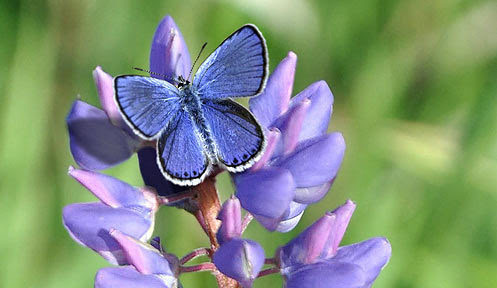
One of my favorite non-local butterflies is the Paper Kite Butterfly! They are a large black and white butterfly from southern Asian countries like Malaysia and the Philippines, as well as parts of Australia. I have actually gotten to both see and hold this species inside various butterfly houses. Paper Kites have a bunch of interesting facts about them, like how there are over 20 subspecies of Paper Kite! Paper Kites are also poisonous due to their host plants being poisonous.

I have more favorites though! Feel free to ask about them, or like, my favorite in specific categories, like favorite african species, or favorite blue species, or funniest looking species, or whatever. This is like my favorite thing to talk about.
#butterfly#butterflies#tw bug#tw bugs#i am so happy right now#i love talking about my special interests#but butterflies especially#give me more questions lmao#karner blue butterfly#paper kite
2 notes
·
View notes
Text

Karner Blue Butterfly (Plebejus melissa samuelis)
Endangered
US, Midwest to New England
threats: development causing loss of the blue lupine flower, on which it depends
#pretty blue!#animal art#conservation#endangered species#insect art#butterfly#karner blue#Plebejus melissa samuelis#insect#usa#north america
35 notes
·
View notes
Text



Found a few Karner blue butterflies on the lupine at the sand plains management area. Pretty little things!
5 notes
·
View notes
Text
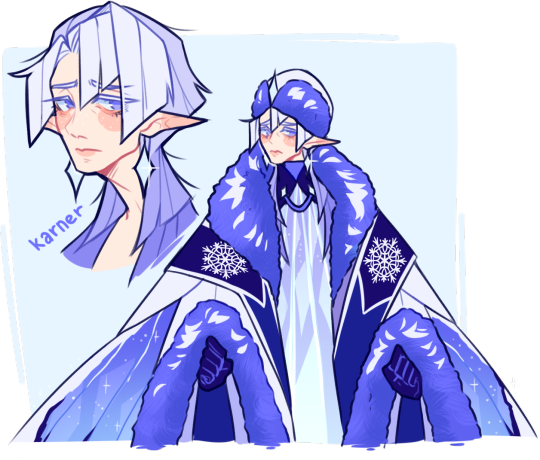

Since I made a spring and autumn fairy, here is a winter fairy I made!
I based him on the Karner Blue butterfly, it's also where I got his name from
He is the penpal of Aleph, the younger autumn prince. Karner himself is a loser with no game and thought his pal was the same
(they met when they were younger and Aleph got a glow up, Karner did not) so he's shocked Aleph left his virgins4life club
I also have a summer fairy designed, but he doesn't have enough art to get his own post yet haha
221 notes
·
View notes
Text



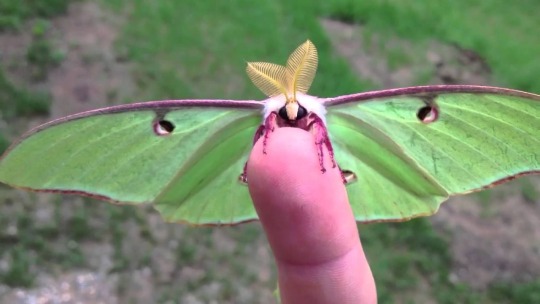

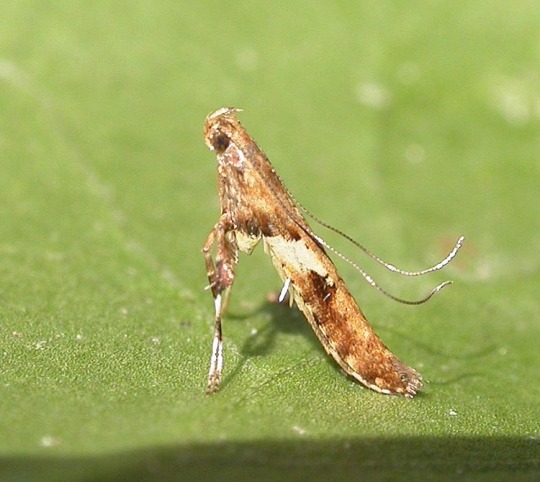

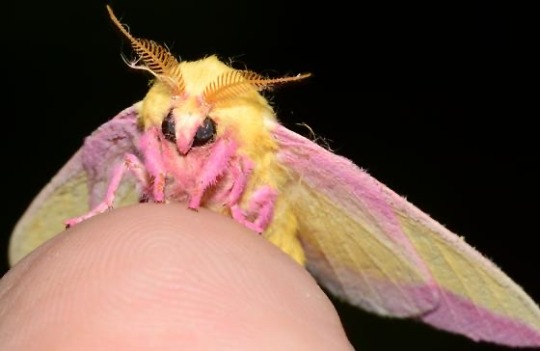
254 notes
·
View notes
Text
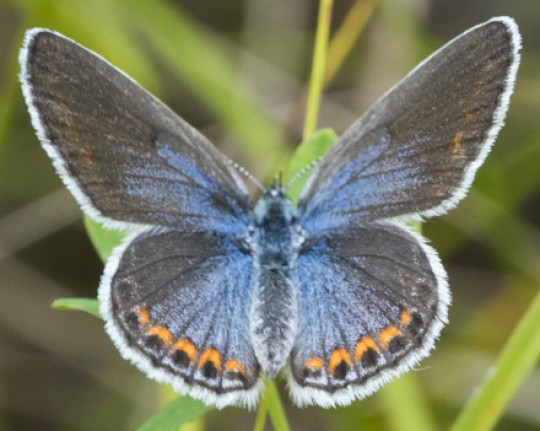


Crochet a Karner Blue Butterfly ... WOW! 👉 https://buff.ly/3FdWM5K 🦋
27 notes
·
View notes
Text


Christi Belcourt (Michif), The Wisdom of the Universe, 2014, acrylic on canvas
“This work features plants and animals that are listed in Canada as threatened, endangered, or extinct, like the dwarf lake iris, the Karner blue butterfly, and the cerulean warbler. Belcourt hopes that through her work we will remember the interconnected nature of existence on this planet. She encourages us to abandon unsustainable paths in favor of an abiding relationship with Mother Earth, stating, “This wondrous planet, so full of mystery, is a paradise. All I want to do is give everything I have, my energy, my love, my labor—all of it in gratitude for what we are given.””
52 notes
·
View notes
Photo

Karner blue butterfly, endangered, Necedah National Wildlife Refuge, Wisconsin, USA
photograph by Jill Utrup/USFWS
48 notes
·
View notes
Text
List 5 topics you can talk on for an hour without preparing any material
tagged by @sasusquatch
hockey narratives: specifically sid and geno but i will literally never shut up if you let me start about hockey, i have a 50-slide powerpoint on hockey duos and it only covers 4 of them and i have it memorized. i can, will, and have ranted about for an hour about sid crosby. i got into this fandom two months ago and let me tell you i fell down the rabbit hole so hard and fast it made everyone in my life think i'd been replaced by an alien
my garden: let me tell you how much of a bitch it is to grow cherry tomatoes out of a hanging basket in an effort to maximize their vining nature and my square footage. growing everything in containers because of soil issues. how i wanted to get a worm bin for vermicomposting but my family wont let me keep it in the basement and im growing milkweed for the monarchs and trying to find real wild lupine for the karner blue butterflies and how to grow a polyculture lawn when climate change is a bitch
social justice: one time i got drunk at a con i was in a guy's lap in a pool and he absolutely wanted to bone and i was too busy ranting about late stage capitalism and minimum wage and he put up with it for far too long to not get laid sorry not sorry dude maybe be more sympathetic to the plight of the working poor (this is not an isolated incident)
fallout 4 but the logistics of being General: i played too much fallout 4 but for every hour in game i spent 2 figuring out how it would work realistically (within the game's universe) i had every settlement figured out for what it would realistically produce including getting salt from the castle using nuclear reactors and fishing in taffington boathouse, how to use vault 111 for cold storage and build up sanctuary as a rival to diamond city while putting a foothold in hangman's alley, trade routes to maximize efficiency of the traded goods value for each farm/resource, raiding the library for books, setting up civilian vs militia work rotations and having universal basic income to allow for the cap-currency vs commune living discrepancies... i would have been a great general of the minutemen except for the part i'd die of starvation or malnutrition from eating only 200yr old pre-war snack foods and nuka cola or more likely a deathclaw
c!tommy: this was my child. i love him so much even though dsmp went to hell and i hated the ending but i was there gandalf. i was in the trenches. i miss him. i loved his arcs and his growth and his portrayal and how important it was that he was unlikeable sometimes. he made me stop apologizing for being That Bitch. he was a child and he deserved justice and now it's worse because he deserved it in real life too. c and cc tommy you both deserved better.
tagging my 5 with absolutely no pressure or time limit <3 we here for funsies: @hearty-an0n @medusasstory @veerani @the-sad-little-fallen-angel @hir4
5 notes
·
View notes
Text

55 notes
·
View notes
Photo
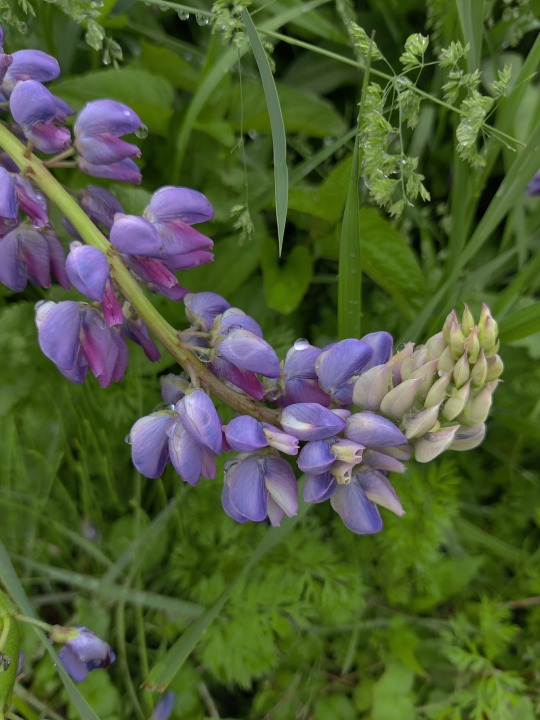
We might be looking into helping with a project for restoration of Karner Blue Butterfly habitat. We’ll see! But how exciting if we can help! We bought our seeds from Prairie Moon and they’re going strong.
39 notes
·
View notes
Text
By Kenny Stancil
Common Dreams
May 5, 2023
"There's now no question that neonicotinoids play an outsized role in our heartbreaking extinction crisis," said one advocate. The EPA must "ban these pesticides so future generations don't live in a world without bees and butterflies and the plants that depend on them."
A newly published assessment from the U.S. Environmental Protection Agency warns that three of the most commonly used neonicotinoid insecticides threaten the continued existence of more than 200 endangered plant and animal species.
"The EPA's analysis shows we've got a five-alarm fire on our hands, and there's now no question that neonicotinoids play an outsized role in our heartbreaking extinction crisis," Lori Ann Burd, environmental health director at the Center for Biological Diversity (CBD), said Friday in a statement.
"The EPA has to use the authority it has to take fast action to ban these pesticides," said Burd, "so future generations don't live in a world without bees and butterflies and the plants that depend on them."
The agency's new analysis found that clothianidin, imidacloprid, and thiamethoxam likely jeopardize the continued existence of 166, 199, and 204 plants and animals protected under the Endangered Species Act (ESA), respectively. This includes 25 distinct insects, more than 160 plants reliant on insect pollination, and dozens of fish, birds, and invertebrates.
"The Biden administration will have the stain of extinction on its hands if it doesn't muster the courage to stand up to Big Ag and ban these chemicals."
Species being put at risk of extinction include the whooping crane, Indiana bat, Plymouth redbelly turtle, yellow larkspur, Attwater's greater prairie-chicken, rusty patched bumblebee, Karner blue butterfly, American burying beetle, Western prairie fringed orchid, vernal pool fairy shrimp, and the spring pygmy sunfish.
"The EPA confirmed what we have been warning about for years—these neonicotinoid insecticides pose an existential threat to many endangered species and seriously undermine biodiversity," Sylvia Wu, senior attorney at the Center for Food Safety (CFS), said in a statement. "Unfortunately, this dire news is what we have told EPA all along. EPA should be ashamed that it still has yet to ban these life-threatening pesticides."
The EPA is well aware of the risks associated with the three neonicotinoids in question. One year ago, the agency released biological evaluations showing that the vast majority of endangered species are likely harmed by clothianidin (1,225 species, or 67% of the ESA list), imidacloprid (1,445, 79%), and thiamethoxam (1,396, 77%). Its new analysis focuses on which imperiled species and critical habitats are likely to be driven extinct by the trio of insecticides.
As CBD pointed out: "For decades the EPA has refused to comply with its Endangered Species Act obligations to assess pesticides' harms to protected species. The agency was finally forced to do the biological evaluations by legal agreements with the Center for Food Safety and the Natural Resources Defense Council. After losing many lawsuits on this matter, the EPA has committed to work toward complying with the act."
"Given the Fish and Wildlife Service's refusal to lift a finger to protect endangered species from pesticides, we commend the EPA for completing this analysis and revealing the disturbing reality of the massive threat these pesticides pose," said Burd. "The Biden administration will have the stain of extinction on its hands if it doesn't muster the courage to stand up to Big Ag and ban these chemicals."
CFS science director Bill Freese said that "while we welcome EPA's overdue action on this issue, we are closely examining the agency's analysis to determine whether still more species are jeopardized by these incredibly potent and ubiquitous insecticides."
As CFS explained:
Chemically similar to nicotine, neonicotinoids kill insects by disrupting their nervous systems. Just billionths of a gram can kill or impair honeybees. Introduced in the 1990s, neonicotinoids have rapidly become the most widely used insecticides in the world. Neonics can be sprayed or applied to soil, but by far the biggest use is application to seeds. The neonic seed coating is absorbed by the growing seedling and makes the entire plant toxic. CFS has a separate case challenging EPA's regulation of these seed coatings.
Bees and other pollinators are harmed by exposure to neonic-contaminated nectar and pollen, with studies demonstrating disruptions in flight ability, impaired growth and reproduction as well as weakened immunity. Neonic-contaminated seed dust generated during planting operations causes huge bee kills, while pollinators also die from direct exposure to spray.
Neonics are also persistent (break down slowly), and run off into waterways, threatening aquatic organisms. EPA has determined that neonics likely harm all 38 threatened and endangered amphibian species in the U.S., among hundreds of other organisms. Birds are also at risk, and can die from eating just one to several treated seeds.
Neonicotinoids have long been prohibited in the European Union, but as recently as a few months ago, a loophole enabled governments to grant emergency derogations temporarily permitting the use of seeds coated with these and other banned insecticides. In January, the E.U.'s highest court closed the loophole for neonicotinoid-treated seeds—a decision the post-Brexit United Kingdom refused to emulate.
In the U.S., neonicotinoids continue to be used on hundreds of millions of acres of agricultural land, contributing to an estimated 89% decline in the American bumblebee population over the past 20 years.
According to Freese, "EPA has thus far given a free pass to neonicotinoids coated on corn and other crop seeds—which represent by far their largest use—that make seedlings toxic to pollinators and other beneficial insects."
"Our expert wildlife agencies—the U.S. Fish and Wildlife Service and the National Marine Fisheries Service—have the final say on this matter," Freese added, "and may well find that neonicotinoids put even more species at risk of extinction."
A 2019 scientific review of the catastrophic global decline of insects made clear that a "serious reduction in pesticide usage" is essential to prevent the extinction of up to 41% of the world's insects in the coming decades.
#neonicotinoid insecticide#clothianidin#imidacloprid#thiamethoxam#endangered species#environmental protection agency#endangered species act#environment
4 notes
·
View notes
Text


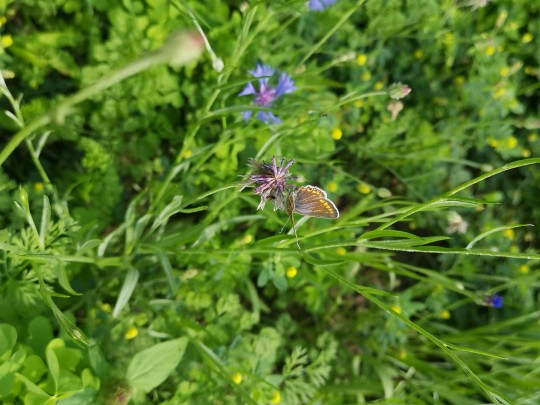

I saw this little beauty in our front yard where we decided to plant field flowers and such 🥰 ( we have been getting tons of bees, wasps, grasshoppers and some butterflies)
I haven't seen one like this before here and if my wikipedia search to try and identify it is correct it's not surprising
Based on appearance/location it could be a female Karner blue which would be pretty exiting! But I could be wrong since I am not an expert on this by any stretch of the imagination
2 notes
·
View notes
Text
Wild lupine

Wild lupine, sometimes called bluebonnet, is one of the most beautiful perennial flowering plants. They bloom in early spring or early summer, and are usually blue, pink, or purple. When spread across meadows and along roadsides, they can bring even the most mundane landscapes to life. Wild lupine is also the only plant used by the Karner blue butterfly to protect its eggs; when the larvae hatch, they crawl up the lupine steps to eat the new leaves. With the advent of the Industrial Revolution, lupine numbers declined drastically, and the flower is now considered endangered.
3 notes
·
View notes